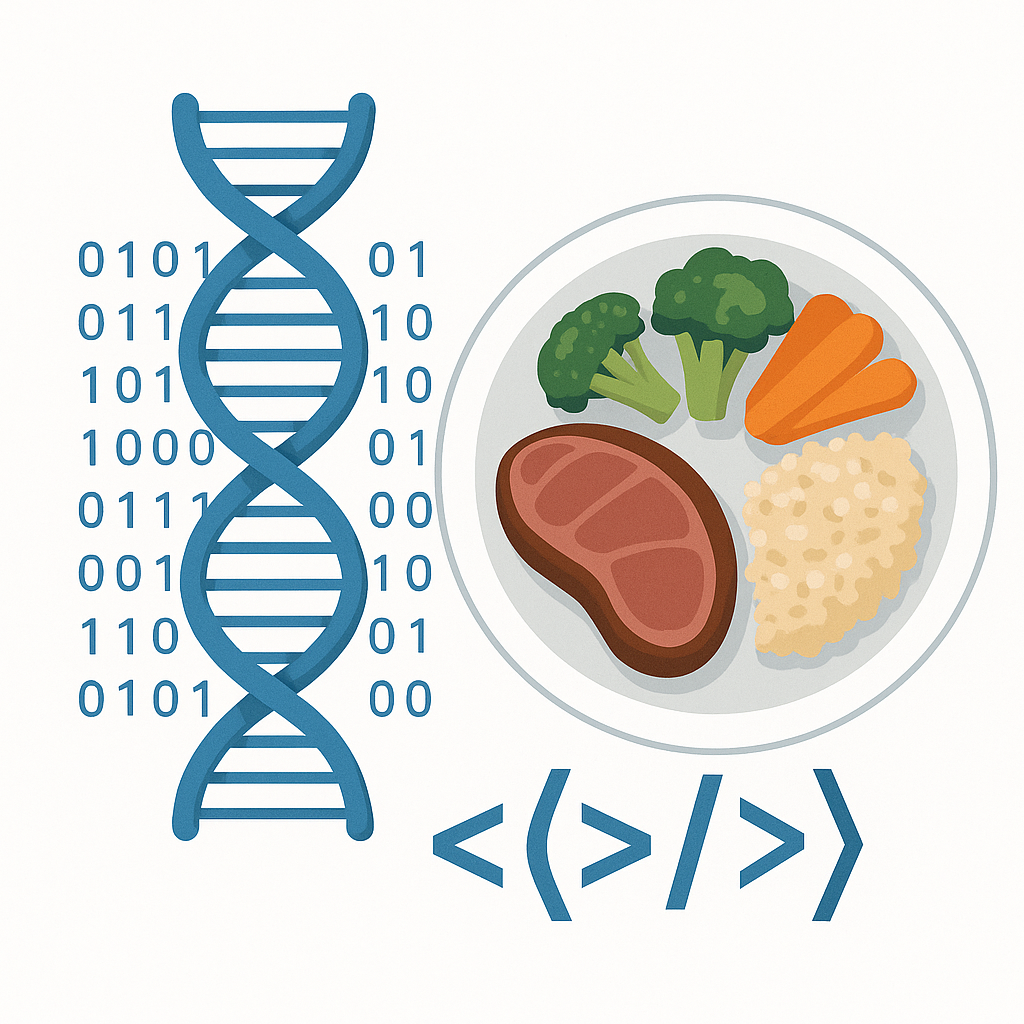What if food could update itself like software?
From Calories to Code
The food of the future may not come from a recipe—it may come from an algorithm. Advances in synthetic biology and cellular agriculture are transforming food into a programmable system. Instead of breeding crops or formulating supplements, scientists are designing foods that respond to individual health profiles, regional diets, and even local environmental conditions.
This is the emerging field of programmable nutrition—where biology meets data science to create food that can adapt to you.
What Is Programmable Nutrition?
Programmable nutrition is the idea that food can be custom-coded to meet precise nutritional, environmental, and cultural needs. It builds on several converging technologies:
- Genomics, which decodes how your body processes nutrients.
- Synthetic biology, which enables cells or crops to be engineered for specific outputs.
- Data modeling, which translates health metrics and environmental data into nutrition “blueprints.”
Think of it as food-as-software: code written in DNA, optimized by feedback from your body and environment.
How It Works
Imagine your smartwatch tracking your metabolism and sending updates to a local food hub. That hub uses cultured cells or engineered crops to produce meals precisely tuned to your needs—less sugar on sedentary days, more iron when your blood levels dip, or enhanced protein profiles for recovery.
This system operates on three levels:
- Personalized Input: Continuous data from wearables, microbiome scans, or genetic profiles defines your nutritional target.
- Biological Synthesis: Cultured food platforms—whether lab-grown meat or gene-edited crops—adjust their production parameters to match that target.
- Automated Output: AI systems monitor feedback loops, refining the composition of your food like an app releasing updates.
Food becomes dynamic, not static—capable of evolving in real time.
Crops as Living Databases
In agriculture, programmable nutrition could mean regionally tuned crops that adapt to soil, climate, and public health conditions. A drought-prone region could grow heat-resistant corn with added vitamin A; another could grow rice with built-in probiotic benefits.
These “living data systems” blur the line between farming and information management. Farmers of the future might not just plant seeds—they might install updates.
The Role of Cultured Foods
In cultured meat and dairy production, programmable nutrition takes an even more direct form. By editing cell lines, producers can control the amino acid balance, fat ratios, or micronutrient content of meat without relying on animal feed or antibiotics.
The result is precision protein, where each batch can be tailored for specific populations—children, athletes, or regions facing malnutrition.
Benefits and Possibilities
Programmable nutrition could address several global challenges at once:
- Food equity: Tailor crops and proteins for nutrient deficiencies in developing regions.
- Sustainability: Reduce waste by producing only what’s needed, when it’s needed.
- Health outcomes: Replace generalized diets with data-driven, preventive nutrition.
In short, this model shifts food from supply-driven to data-driven—aligning agriculture with personal and planetary health.
Ethical and Educational Implications
Of course, programmable food raises profound ethical questions:
- Who controls the code that defines what we eat?
- How do we ensure open access to biotech-enabled nutrition?
- Could personalization lead to inequality in food quality or availability?
For educators, these are vital entry points for teaching ethics, biology, and digital literacy. Students can explore how “edible technology” connects human biology, data ethics, and sustainability in ways no previous generation faced.
A New Form of Food Literacy
Parents and teachers will need to help young people understand that nutrition is no longer just about choosing between organic or processed—it’s about understanding data and design.
Tomorrow’s food decisions will involve reading ingredient lists and algorithmic transparency statements. A new kind of literacy will be essential: the ability to question and interpret how food is programmed, much like we question how apps use our data today.
The Road Ahead
Programmable nutrition is still in its infancy. Most of the tools—AI-driven bioreactors, genomic data integration, and consumer-grade health interfaces—are just beginning to mature. But the direction is clear: the boundary between biology and information is dissolving.
In a world where food can be coded, personalized, and locally produced, our relationship with eating itself will evolve—from survival to customization, from consumption to collaboration.
The next generation won’t just eat food—they’ll interact with it.


